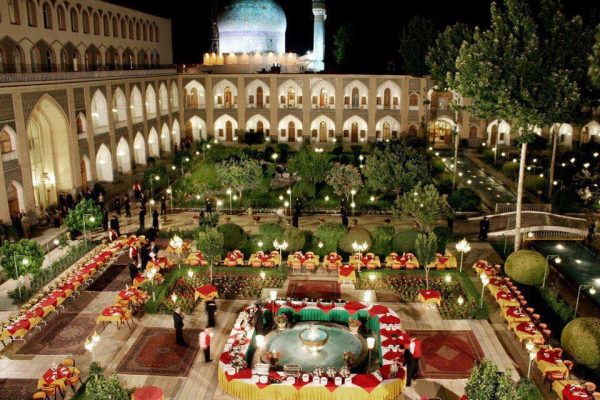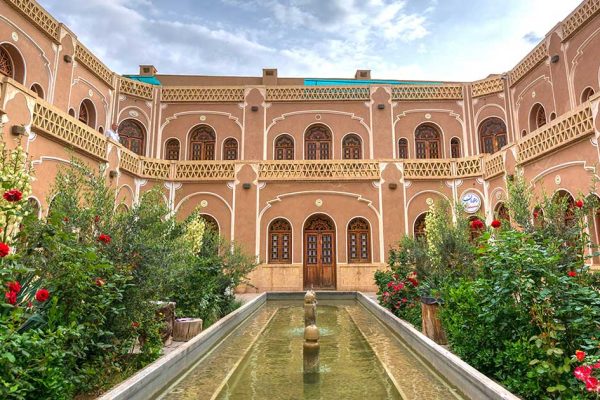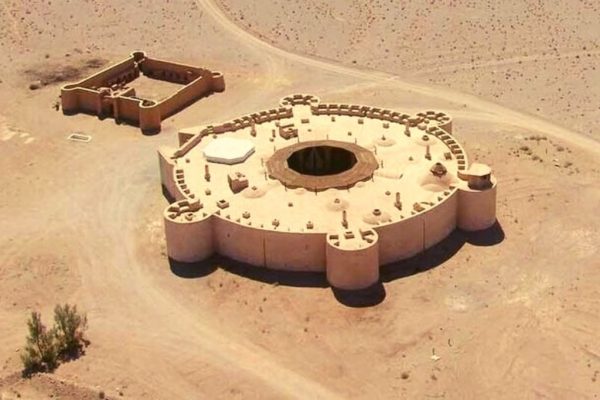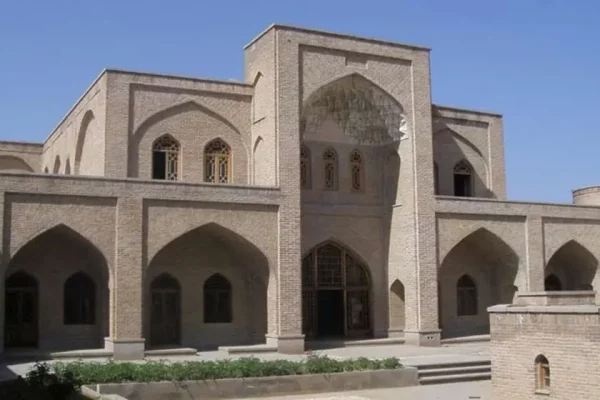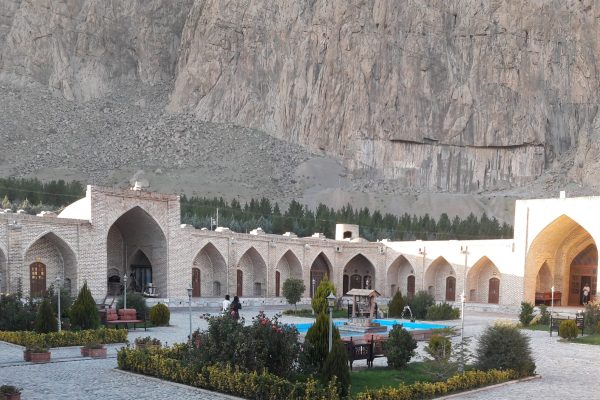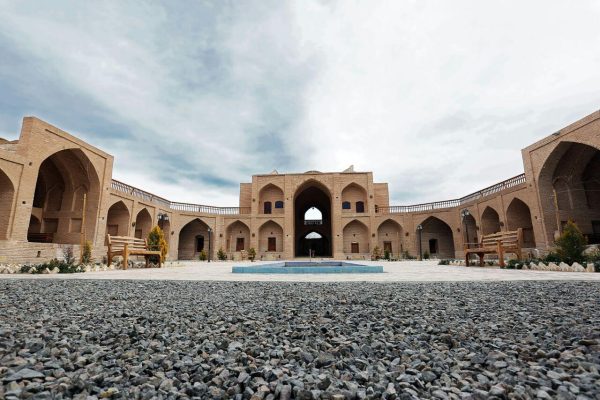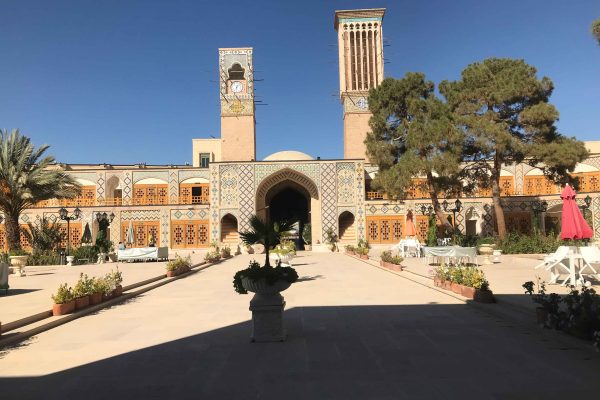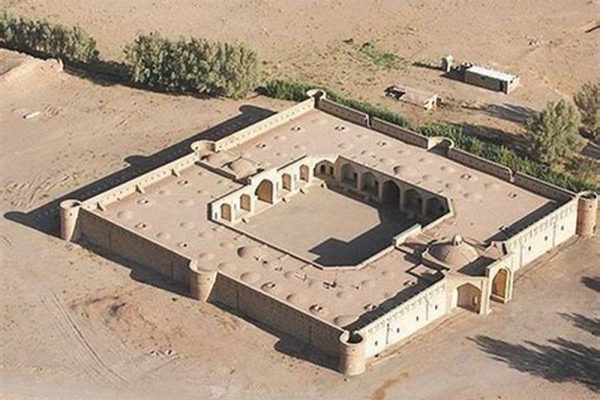Iran Caravanserais (UNESCO)
In the forty-fifth session of the UNESCO World Heritage Committee, held in Riyadh, Saudi Arabia, Iran succeeded in inscribing 54 Iran Caravanserais in 26 provinces, from the Sassanids (224 CE-651) to the Qajar period (1789-1925), on the UNESCO World Heritage List.
Most Iranian caravanserais were built along the Silk Road, as one of the main trade routes between the East and West. Caravanserai means house for caravans (group of travelers).
The Silk Road with about 8000 km long was the longest and oldest route in the world. As the most important route in the world, it connected the East of Asia into Europe and Africa through Iran.
The main Silk Road reached Mashhad from two routes. The North one passed from Marv to Sarakhs and Tous, and the South one came from Haraat. It went from Mashhad to Neyshabour, Azadvaar, Jovein Plain, Jajarm, and Bastaam, passing the north of the desert into Damqan, Semnan, and Rey. It was separated from Rey into two routes again. The South one went to Hamadan (Ekbatan), Passing the Zagros Mountain Ranges into Kangavar, Kermanshah, Qasreshirin, Bagdad, and the Mediterranean Sea. The North one, passing through the Alborz Mountain ranges, went to Tabriz, passing from the north of Lake Urmia, Arzrom, and Trabzon Port, and proceeded through the Black Sea to Europe.
In different eras after Islam, some other routes were added to the main Silk Road. One of them was the road used by the Muslim Pilgrims to Mecca. The other was the passenger route to India which has been known as the Spice Road. The glory of developing Iran caravanserais along the roads was in the Safavid Dynasty in the 16th century A.D. Shah Abbas I ordered the building of 999 caravansaries between and inside the cities to provide facilities for caravans, pilgrims, and other travelers. The development of caravansaries continued during the Qajar Dynasty too, but during the Pahlavis Dynasty, they became useless because of building the railroads and asphalt roads. Nowadays, some caravansaries, managed by the private sector, are used as accommodation, restaurants, and other services to tourists.
Persian caravanserais were roadside inns, usually built on a square or triangular plan around a big yard with one entrance, and two floors with corridors and rooms. There are also exceptions, like caravanserais with two entrances both in front and in one side wall, without interior yard, or the caravanserai with a round plan. The number of iwans could vary between two and four. Caravans could keep their animals like camels and horses in the caravanserais. The first floor was usually used as lodging and the second floor as rooms for travelers.
Some of the Most Famous Caravansaries in Iran
Shah-Abbasi Caravanserai in Isfahan (Hotel), Deyregachin Caravanserai in Qom (the Mother of Caravansaries), Miandasht Caravanserai in Meyamey (the greatest and the most complete caravanserai), Zeynoddin Caravanserai in the South of Yazd Province (the rectangular shaped caravanserai), Robaat-e Sharaf near Sarakhs (the masterpiece of break-works in the world), Bisotun Caravanserai in Kermanshah Province (Hotel), Kharanaq Caravanserai in Yazd Province (eco-camp), Khanat Caravanserai in Tehran (Restaurant), Sadolsaltaneh Caravanserai in Qazvin (bazaar and restaurant), Shah-Abbasi Caravanserai in Neyshabour (Precious stone bazaar), Babaqodrat Caravanserai in Mashhad (Restaurant), Maranjab Caravanserai near Aran-o-Bidgol (eco-camp in desert), Dehnamak Caravanserai near Garmsaar (eco-camp and restaurant), Lasjerd Caravanserai near Semnan (eco-camp and restaurant), Khajeh-Nazar Caravanserai near Jolfa (eco-camp), Madar-Shah Caravanserai near Isfahan, Veyrani Robaat near Mashhad, Ahovan Stone Robaat near Semnan, Qasre-Bahram and Eynorrashid Caravanserais in National park of Iran desert, Pasangan Caravanserai in Qom, Toroq Robaat in Mashhad, Kalmard Caravanserai in Tabas, Gougad Citadel in Golpayegan, Abbasi Caravanserai in Karaj, Shah-Abbasi Caravanserai in Sabzevar, Mirza-Abolhasan Caravanserai in the great bazaar of Tabriz, Bazaar Caravanserai in Hamadan, Izadkhast Caravanserai in Fars province, etc.

